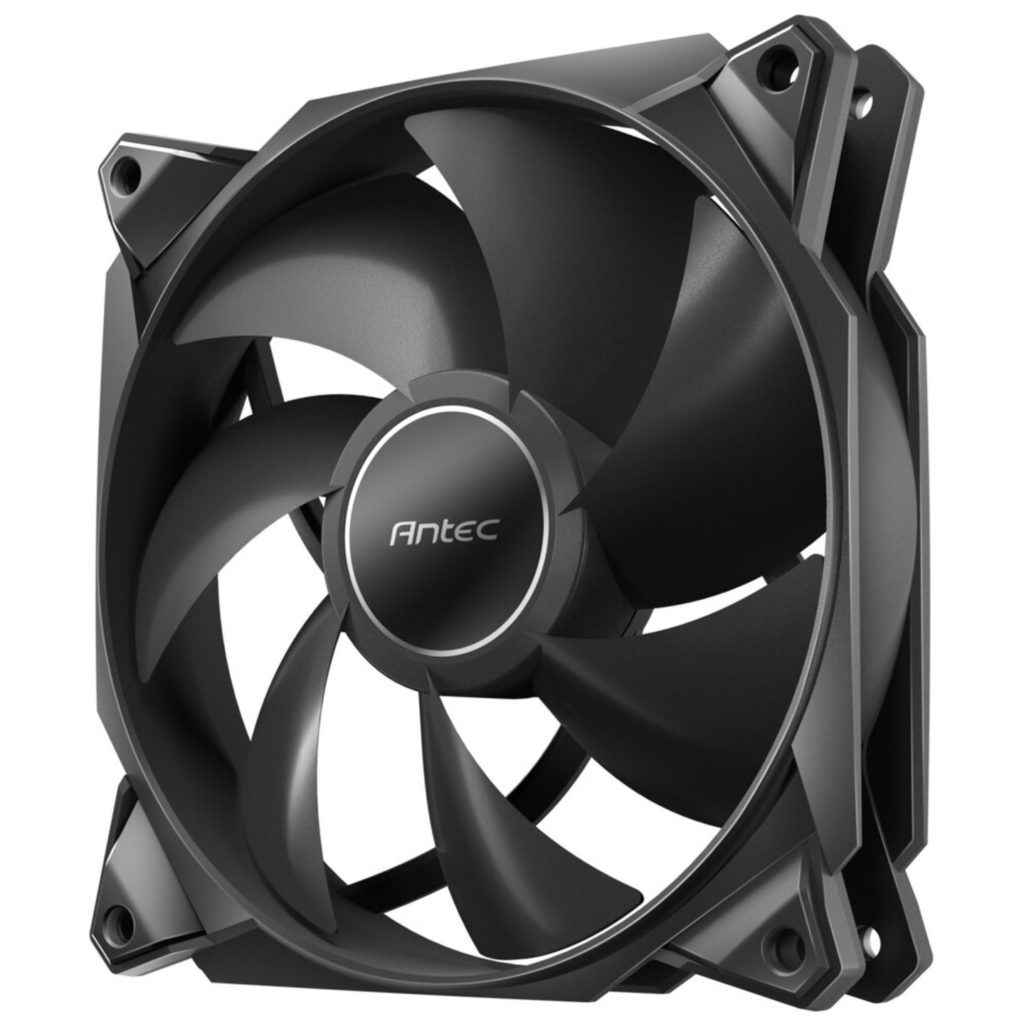Antec Storm 120: A fan that is supposed to have unprecedentedly high static pressure
After the June announcement, it seems that Antec has everything ready to ship the Storm 120 fans going on sale. We don’t usually write two news articles about one fan, but we’re going to make an exception now. Apart from the fact that the price is already known, this one should mainly be a mid-range dark horse according to the design details. Technically the Storm 120 look really good and efficient.
The new Storm 120 represents the most powerful and efficient fan in Antec’s range. At least, that’s how this fan is profiled, but there’s no reason to think it will be any different in the end. The rotor relies on proven blade shapes with more pronounced leading edge curvature.
We’ve already discussed why this geometric trend is being seen more and more often in fans. This blade shape twists the airflow so that the air doesn’t flow too much around the frame walls as it does in traditional fans with less curved blades. The result should be (and tends to be) lower noise at the same airflow because there is not as much friction of the air around the frame.
Unlike many similar designs, Antec goes about it a little differently. Most manufacturers use nine blades, and Arctic only uses five blades for the P-series fans, for example. Fewer blades on a fan that is supposed to achieve high static pressure means that there has to be more surface area per blade. This makes the blade larger overall, longer, and tends to undulate more (and thus often not only creates stronger resonant frequencies, but also makes the rotor transmit vibrations to the frame more intensely). Antec took the middle ground with seven blades.
Compared to Arctic fans, the blades are significantly smaller and there could be smaller “gaps” between the blades compared to the nine-blade 120 mm models. The smaller they are, the less air escapes through them due to back pressure and naturally a higher static pressure is achieved and therefore less airflow loss through obstacles such as the typical obstacles (filters, grilles, radiators) that fans have to coexist with.
Shape is not everything, of course, and how strong the material used to make the rotor is is also important. Antec doesn’t tout this one, but given the high static pressure in the specs (2.7 mm H2O), it could be a stronger material than what was used to make the Akasa Alucia SC12. This Akasa fan also has an efficient shape, but it does not achieve top performance just because of softer blades (but again, the manufacturer does not claim otherwise, the reported static pressure is actually quite lower, even lower than what we measured). However, this might not be the case with the Antec Storm 120, at least not to this extent, and the efficiency of this fan will be remarkable.
The stated maximum airflow (113.09 m3/hr) will be very close to reality given this design and speed range (600–2000 rpm), and hopefully the static pressure will not be significantly lower either. But we will discuss this in detail in our tests. Samples of Antec Storm 120 are also headed to the editorial office.
The official recommended retail price is already known – 14.80 EUR, which is close to the SilentiumPC Fluctus 120 PWM, Noctua NF-P12 redux-1700 PWM or BeQuiet! Pure Wings 2.
English translation and edit by Jozef Dudáš










